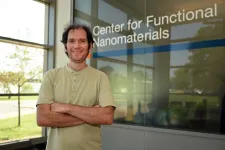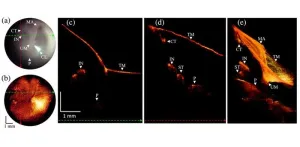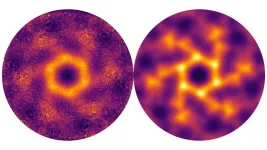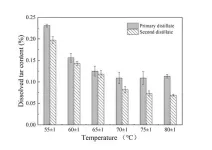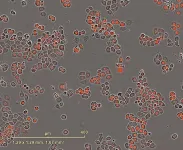(Press-News.org) Scientists for several years have studied the theoretical effectiveness of injecting sulfur dioxide into the stratosphere to reflect heat from the Sun and offset Earth’s warming temperatures. But they also want to ensure that the solar geoengineering approaches being studied are evaluated for their technical feasibility, as well as their cooling potential and possible ecological and societal side effects.
To guide future work, an international team of scientists led by the U.S. National Science Foundation National Center for Atmospheric Research (NSF NCAR) has published a paper with specific recommendations for evaluating proposals to inject sulfur dioxide, which is known as stratospheric aerosol intervention (SAI). The paper also suggests criteria for discontinuing those scenarios that are not feasible because of scientific, technical, or societal issues.
“The goal is to work toward an assessment that can be used to identify the most feasible and legitimate scenarios, based on both how much they reduce natural and societal risks as well as any unwanted side effects,” said NSF NCAR scientist Simone Tilmes, the lead author. “If society were to ever consider implementing SAI, it is imperative that we provide the best possible scientific understanding to policy makers and the public.”
The paper, based on work funded by NSF and NOAA, was published in Oxford Open Climate Change.
Mimicking volcanic eruptions
Once injected into the stratosphere, sulfur dioxide would form sunlight-reflecting sulfate aerosols. Previous studies, drawing on computer modeling and observations of large volcanic eruptions, have shown these aerosols would have a cooling effect similar to that of a major volcanic eruption.
The injections could continue to cool Earth for decades or even centuries, buying time until heat-trapping greenhouse gases in the atmosphere return to lower levels.
The previous research, however, has also emphasized the potential risks of SAI, such as changing the stratospheric ozone layer and altering global precipitation patterns.
Since such injections cannot perfectly offset the impacts of greenhouse gas emissions, Tilmes and her co-authors write that informed policy decisions require a comprehensive understanding of the benefits and risks of SAI. They emphasize the need for a research and governance structure, with fair representation from both the Global South and North, to oversee SAI research and technology developments.
“Research on various solar geoengineering methods has been going on for a few decades now, but there hasn't been a formal assessment collating all the information in one place suitable for policy makers and the public,” said NOAA scientist Karen Rosenlof, a co-author of the new paper. “It’s time for such an assessment to occur, covering the criteria described in this paper, and repeated on a regular basis."
The paper proposes eight research criteria for assessing SAI developments. The criteria are:
Technical and economic limitations
Cooling potential
Ability to meet climate objectives
Infrastructure for monitoring, detection, and attribution
Large-scale and regional climate response
Impacts on human and natural systems
Societal risks
Mitigation of risks through governance
The paper recommends issuing assessment reports about SAI developments every few years with globally representative participation. The criteria can also be applicable to other solar radiation modification proposals, such as the brightening of marine clouds.
“The goal of these criteria is to promote optimal approaches from a climate perspective while carefully weighing the benefits and risks and making sure to include the perspectives of underrepresented groups and the Global South,” Tilmes said.
About the article
Title: “Research criteria towards an interdisciplinary Stratospheric Aerosol Intervention assessment”
Authors: Simone Tilmes, Karen Rosenlof, Daniele Visioni, Ewa M. Bednarz, Tyler Felgenhauer, Wake Smith, Chris Lennard, Michael S. Diamond, Matthew Henry, Cheryl Harrison, Chelsea Thompson
Journal: Oxford Open Climate Change
END
Scientists propose guidelines for solar geoengineering research
New paper focuses on feasibility and impacts of Earth-cooling stratospheric aerosol injection
2024-08-23
ELSE PRESS RELEASES FROM THIS DATE:
Research spotlight: evaluating hybrid and virtual treatments for children with anxiety and obsessive-compulsive disorder
2024-08-23
Jacqueline Sperling, PhD, a clinical psychologist and assistant professor of Psychology at Harvard Medical School, and co-program director of the McLean Anxiety Mastery Program, led a study investigating the sustainability of outcomes from an intensive group and family-based outpatient cognitive behavioral treatment (CBT) program, that included a hybrid of in-person and virtual treatment sessions for children and adolescents with anxiety disorders and/or obsessive-compulsive disorder (OCD). Her research, which was published last month in Current Developmental Disorders Reports, suggests that an intensive ...
Battelle names Anibal Boscoboinik 'Inventor of the Year'
2024-08-23
Anibal Boscoboinik, a materials scientist at the U.S. Department of Energy’s (DOE) Brookhaven National Laboratory, has been named an “Inventor of the Year” by Battelle Memorial Institute. Battelle, headquartered in Columbus, Ohio, partners with Stony Brook University to form Brookhaven Science Associates, which manages the Lab on behalf of DOE’s Office of Science. Battelle manages or co-manages nine national labs across the country.
At Battelle’s yearly Celebration of Solvers, they award Inventor of the ...
Toward a code-breaking quantum computer
2024-08-23
CAMBRIDGE, MA — The most recent email you sent was likely encrypted using a tried-and-true method that relies on the idea that even the fastest computer would be unable to efficiently break a gigantic number into factors.
Quantum computers, on the other hand, promise to rapidly crack complex cryptographic systems that a classical computer might never be able to unravel. This promise is based on a quantum factoring algorithm proposed in 1994 by Peter Shor, who is now a professor at MIT.
But while researchers have taken great strides in the last 30 years, scientists ...
New imaging device improves ear disease diagnosis
2024-08-23
In the realm of ear health, accurate diagnosis is crucial for effective treatment, especially when dealing with conditions that can lead to hearing loss. Traditionally, otolaryngologists have relied on the otoscope, a device that provides a limited view of the eardrum’s surface. This conventional tool, while useful, has its limitations, particularly when the tympanic membrane (TM) is opaque due to disease.
Enter a groundbreaking advancement from the University of Southern California's Caruso Department of Otolaryngology: a portable OCT otoscope that integrates optical coherence tomography (OCT) with ...
Langbeinites show talents as 3D quantum spin liquids
2024-08-23
A 3D quantum spin liquid has been discovered in the vicinity of a member of the langbeinite family. The material's specific crystalline structure and the resulting magnetic interactions induce an unusual behaviour that can be traced back to an island of liquidity. An international team has made this discovery with experiments at the ISIS neutron source and theoretical modelling on a nickel-langbeinite sample.
When spins in a crystal lattice cannot align to reach a minimum energy together, this is called magnetic frustration. ...
VA funds IU School of Medicine research projects relevant to veterans’ health
2024-08-23
INDIANAPOLIS – Indiana University School of Medicine researchers have cumulatively been awarded nearly $4 million in grant funding through the U.S. Department of Veterans Affairs' Merit Review Award and Career Development programs to support research on diabetes, skin inflammation, cancer and aging.
The Merit Review Award Program supports investigator-initiated research conducted by eligible VA investigators at either VA medical centers or approved sites. This program serves as the VA's primary method for funding basic, preclinical, ...
Researchers identify effective materials for protecting astronauts from harmful cosmic radiation on Mars
2024-08-23
Abu Dhabi, August 23, 2024: Researchers have identified specific materials, including certain plastics, rubber, and synthetic fibers, as well as Martian soil (regolith), which would effectively protect astronauts by blocking harmful space radiation on Mars. These findings could inform the design of protective habitats and spacesuits, making long-duration Mars missions more feasible. Because Mars lacks Earth’s thick atmosphere and magnetic field, astronauts exploring the planet would be exposed to dangerous levels of radiation.
Dimitra Atri, Investigator, ...
People seen as wise share these characteristics, according to a new study
2024-08-23
What makes someone seem wise? People view wisdom through the lens of applying knowledge and thinking logically as well as considering others’ feelings and perceptions, finds a new study led by University of Waterloo researchers who looked at perceptions of wisdom across 12 countries and five continents.
Researchers examined the underlying principles guiding who we perceive as wise in political leadership, science, and daily life. Across different cultures, participants’ judgements converged on two dimensions: reflective orientation and ...
Activated bamboo charcoal’s slow-release properties for enhanced anti-acne formulations containing bamboo vinegar
2024-08-23
Bamboo vinegar is a concentrated liquid obtained from bamboo under high temperature and anaerobic conditions. It contains more than 200 organic components, including organic acids, phenols, ketones, alcohols, and esters, among which acetic acid is the main component. Although bamboo vinegar has been approved by the China Food and Drug Administration as a cosmetic raw material, commercially available bamboo vinegar often contains impurities whose efficacy is not clear, and phenolic compounds and aromatic hydrocarbons ...
When is the best time of day for cancer treatment?
2024-08-23
How effective medications are depends on various factors, including the time of day when they are administered. Why? Because our bodies don’t always function exactly the same. Instead, they follow the cycle set by their internal clock, otherwise known as circadian rhythm. But since each person’s circadian rhythm is different and depends on a number of different factors, it is difficult to tailor medication schedules to an individual patient’s body clock. Researchers at Charité – Universitätsmedizin Berlin have now developed a method for determining the optimum time of cancer treatment based on certain breast cancer ...
LAST 30 PRESS RELEASES:
Beech trees use seasonal soil moisture to optimize water uptake
How thinning benefits growth for all trees
Researchers upgrades 3-PG forest model for improved accuracy
Achieving anti-thermal-quenching in Tb3+-doped glass scintillators via dual-channel thermally enhanced energy transfer
Liquid metal modified hexagonal boron nitride flakes for efficient electromagnetic wave absorption and thermal management
Failure mechanisms in PEM water electrolyzers
Study captures how cancer cells hide from brain immune cells, shows that removing their “don’t eat me” signals stops their escape
New breakthrough in detecting ‘ghost particles’ from the Sun
Half of people arrested in London may have undiagnosed ADHD, study finds
From dots to lines: new database catalogs human gene types using ’ACTG’ rules
Persistent antibiotic resistance of cholera-causing bacteria in Africa revealed from a multinational workshop for strengthening disease surveillance
SwRI, Trinity University to synthesize novel compound to mitigate effects of stroke, heart attack
Novel endocrine therapy giredestrant improves disease-free survival over standard of care for patients with early-stage breast cancer in phase III lidERA trial
Gen Z views world as "scary place" with growing cynicism about ability to create change
Biosensor performance doubled – New applications possible
Leveraging incomplete remote sensing for forest inventory
Key chemical in dark chocolate may slow down ageing
New 15-minute hepatitis C test paves the way for same-day treatment
Uranus and Neptune might be rock giants
Magnetically actuated soft electrodes for multisite bioelectrical monitoring of ex vivo tissues
FAU engineers decode dementia type using AI and EEG brainwave analysis
Carrier-free peptide–daunorubicin–small interfering RNA nanoassembly for targeted therapy of acute myeloid leukemia
Global Virus Network announces appointment of new board members
Artificial beaver dams show promise in offsetting climate change effects
Could hidden infections be fueling long COVID?
Targeted oxygen for initial resuscitation of preterm infants
Researchers develop models to help diagnose ALS earlier through blood biomarkers
Jeonbuk National University researchers develop novel eco-friendly and photo-switchable smart adhesives
Magnetic ordering induces Jahn–Teller effect in spinel-type compounds
A mitochondrial protein may hold the secret to longevity, new study finds
[Press-News.org] Scientists propose guidelines for solar geoengineering researchNew paper focuses on feasibility and impacts of Earth-cooling stratospheric aerosol injection

